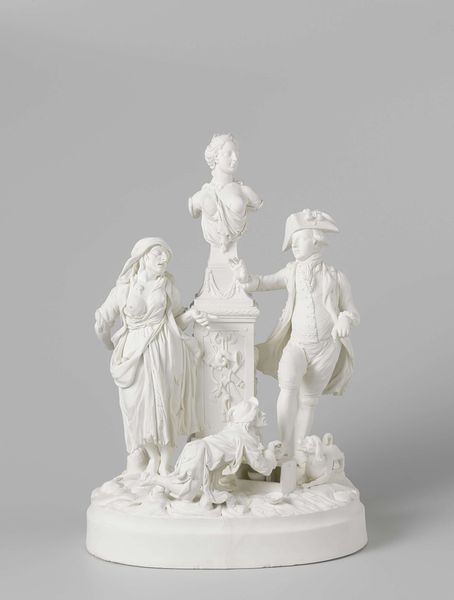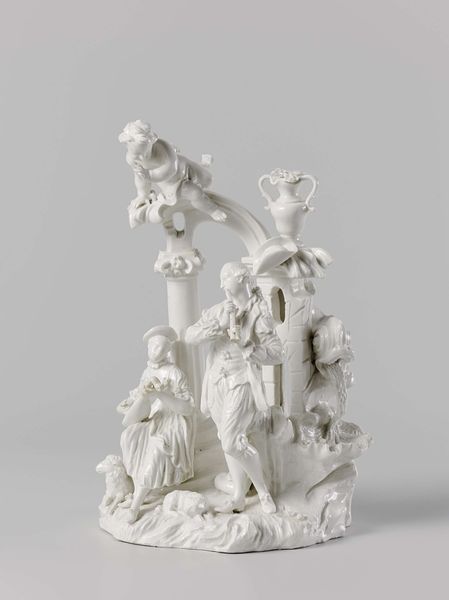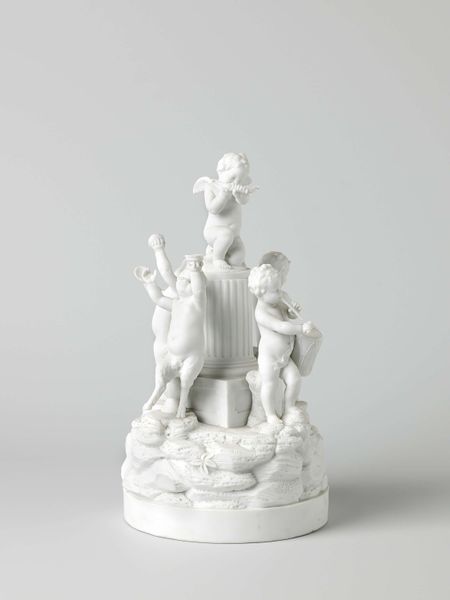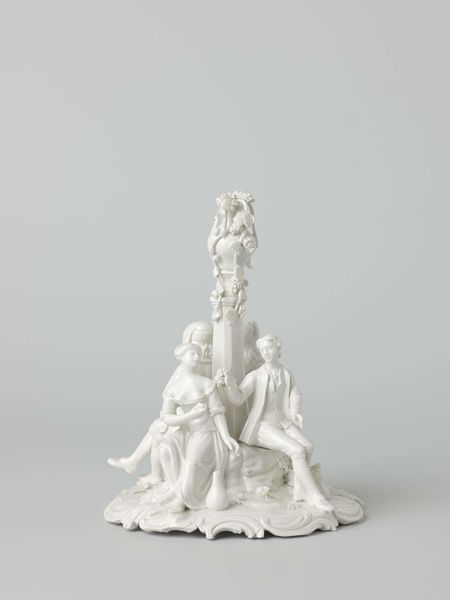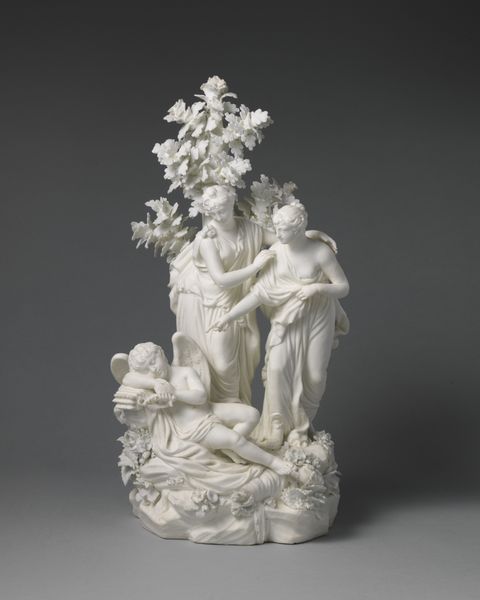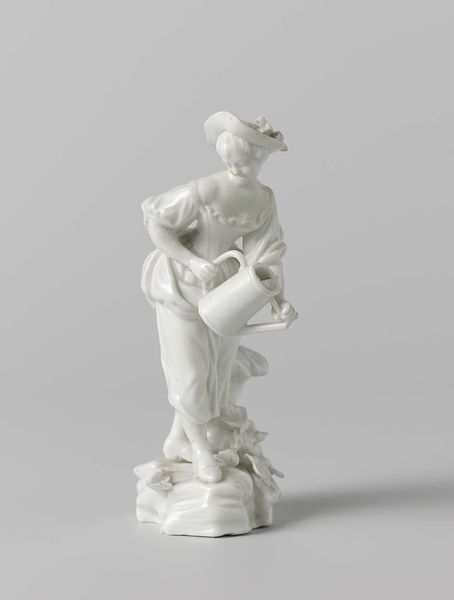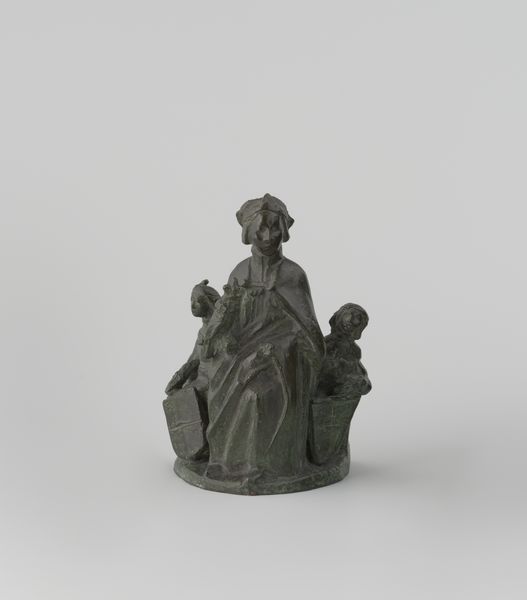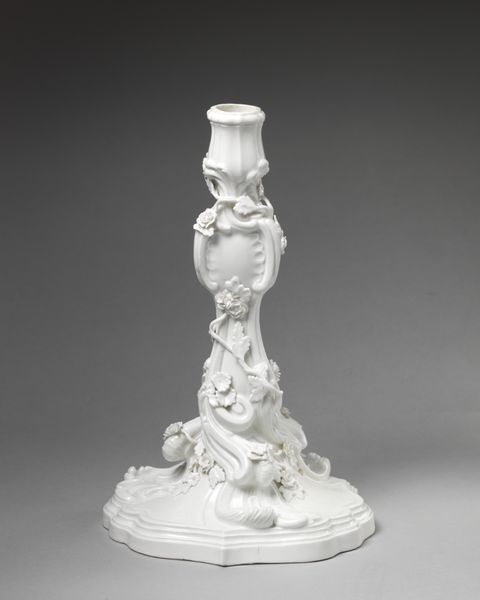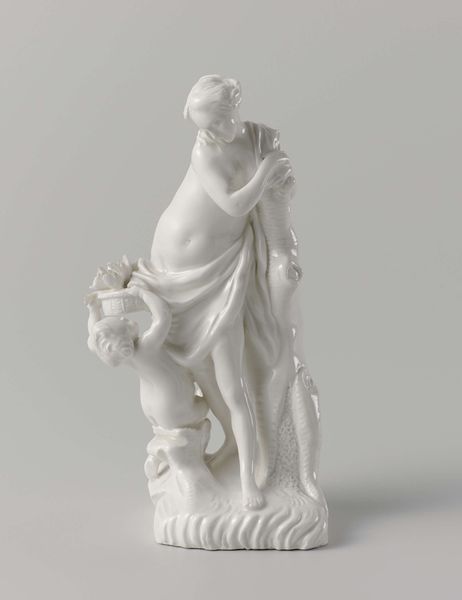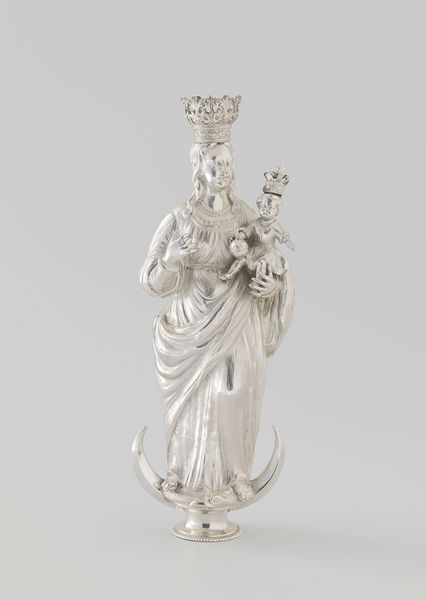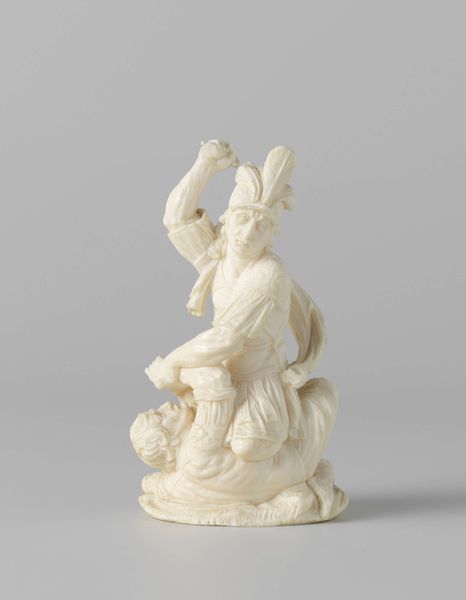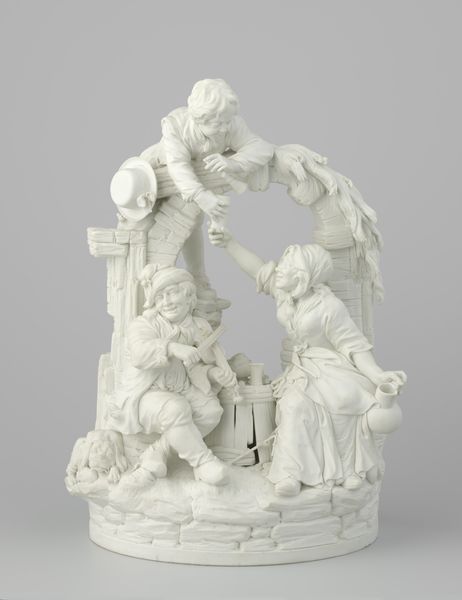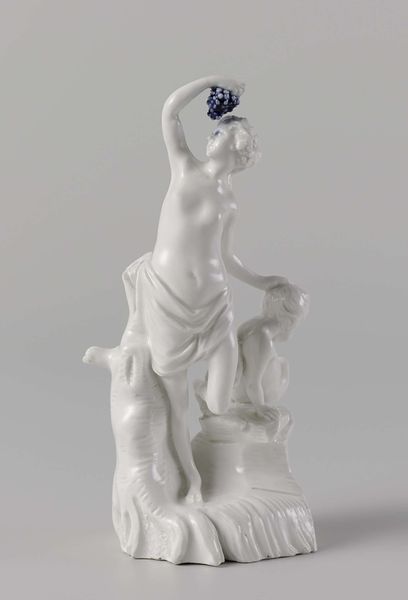
porcelain, sculpture
#
porcelain
#
figuration
#
sculpture
#
genre-painting
#
rococo
Dimensions: height 26.6 cm, width 17 cm
Copyright: Rijks Museum: Open Domain
Curator: At first glance, I see a very pristine and delicate piece. All in white porcelain. Editor: Indeed. What we're looking at is a porcelain sculpture entitled "Figure group of a shepherd, and shepherdess near a ruin," made around 1764 by the Weesper porseleinfabriek. Curator: The Rococo style is apparent. The flowing lines, the delicate detail—it's visually rich, but controlled, almost mannered. Editor: Right. It's fascinating to consider the socio-economic implications of producing something like this. Porcelain production at Weesper, like elsewhere, relied on significant skilled labor. The intense firing process, the moulding—these demanded serious resources. Curator: Resources clearly well spent. Consider how the folds in the garments create this constant ripple effect throughout the composition, echoed by the textures of the "ruin" itself. It invites the eye to meander, always finding new surfaces. Editor: And those carefully chosen subjects! The shepherd and shepherdess evoke idealized pastoral scenes, fantasies divorced from the realities of agricultural labor. These pieces become aspirational objects, speaking volumes about the values of their owners. Curator: Yet it also performs as sculpture. The cherubic figure on the arch contributes a sense of lightness, acting as a counterpoint to the slightly heavier figures below. It almost destabilizes the composition, playing with the eye. Editor: From a production perspective, imagine the moulds required! Was it assembled from many individually cast pieces, or just a few? How was labour divided? These details contextualize both the aesthetics and its place within the larger culture of the time. Curator: A beautifully structured little world, nevertheless. This piece's appeal is evident in its timeless attention to detail, which is, perhaps, only enhanced by the fact it has managed to survive for hundreds of years! Editor: Ultimately, considering production methods, and target demographics alongside stylistic qualities enriches our appreciation of the sculpture's place within Dutch society.
Comments
rijksmuseum about 2 years ago
⋮
This charming figure group is entirely Rococo in style. It was modelled by Nicolas Gauron, who had trained in Tournai and then worked in Weesp for a few years. Gauron’s modelling must have been a great success: the quality of his works was higher than what had been achieved in Weesp until then. The two figures were later also produced as individual statuettes.
Join the conversation
Join millions of artists and users on Artera today and experience the ultimate creative platform.
